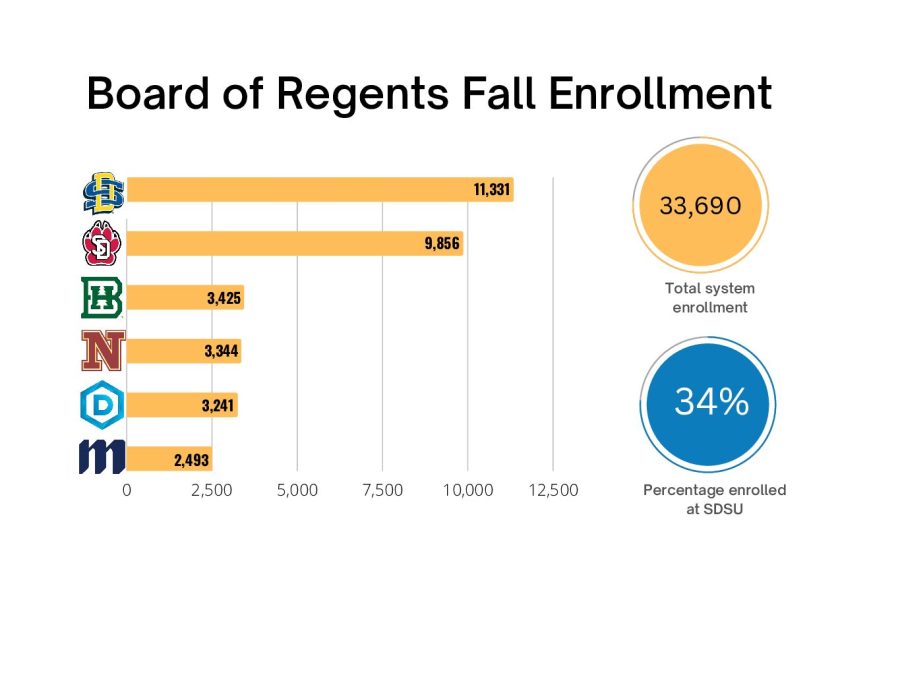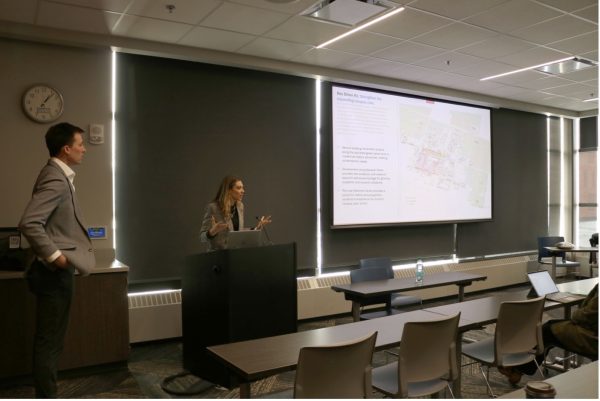Freshmen class ‘one of top ten’ biggest in history
September 20, 2022
The Board of Regents released fall 2022 enrollment numbers for all six public universities, and SDSU has the largest freshman class since 2017 with 2,192 first-year students enrolled. Total campus enrollment is 11,331, which is down 134 students from last year at this time.
“We are very excited to welcome such a large class of incoming students to South Dakota State University,” President Barry Dunn said in a press release on Tuesday. “It is clear SDSU is an institution of choice for high school graduates, and we are pleased they chose our premier university. Our campus is vibrant, and our students are certainly off to a great start this fall semester.”
Despite the increase in freshman enrollment, overall enrollment numbers are down, which the press release attributed to fewer students in graduate school courses. Dunn said the reason for the higher enrollment in the past two years, could be due to the pandemic and individuals looking to further their education.
“It is commonly a time when individuals go back to school or find courses that will enhance their professional opportunities,” Dunn said in the press release. “We saw individuals the previous two years take that opportunity, especially when it came to health care workers and teachers. We certainly fulfilled our mission of providing access to higher education to hundreds of South Dakotans.”
Michaela Willis, vice president for student affairs, said pre-pandemic recruitment efforts have attributed to the rise in first-year students. But, although the incoming class is the largest it’s been in five years, Willis said the university is continuing to monitor the nationally-projected harsh decline in enrollment over the next few years.
“We’re very excited about our incoming freshman classes; it’s one of our top 10 freshman classes in our history, so that’s pretty exciting and it definitely helps us with our future trajectory,” Willis said. “However, we are still monitoring the 2025 enrollment challenge that faces the region and the entire country. We had a good year, and we’re anticipating that we’ll continue to have good years, but we also know that the number of high school graduates will dramatically reduce in the next coming years. So it’s something that we’ll continue to pay attention to and continue to plan around.”
In addition to a large first-year class, total credit hours and dual credit enrollment have also continued to increase. Credit hours increased from 134,324 in 2021 to 134,786 in 2022, and dual credit rose to 903 total students.
Willis said three- and four-year graduation rates have increased and overall student loan debt has decreased, which is primarily due to the rise in dual credit enrollment.
“When students come in with credit hours before their freshman year through dual credit, they’ve typically paid less for that than they will when they get into college, so that decreases the cost of a degree and it also decreases the time it takes them to get their degrees,” Willis said.
According to Willis, as enrollment grows, confidence in the university and student degrees also grows.
“Enrollment growth and enrollment stabilization just make the entire university stronger, the perception of the university becomes stronger, and we’re able to do more for our students,” she said.























